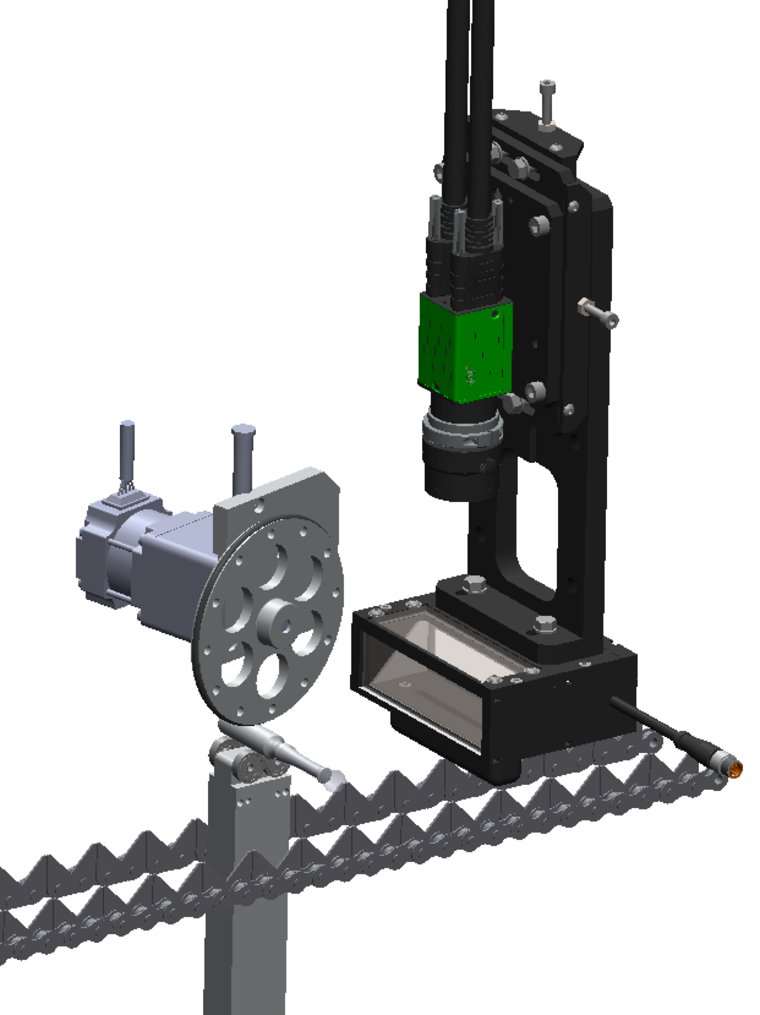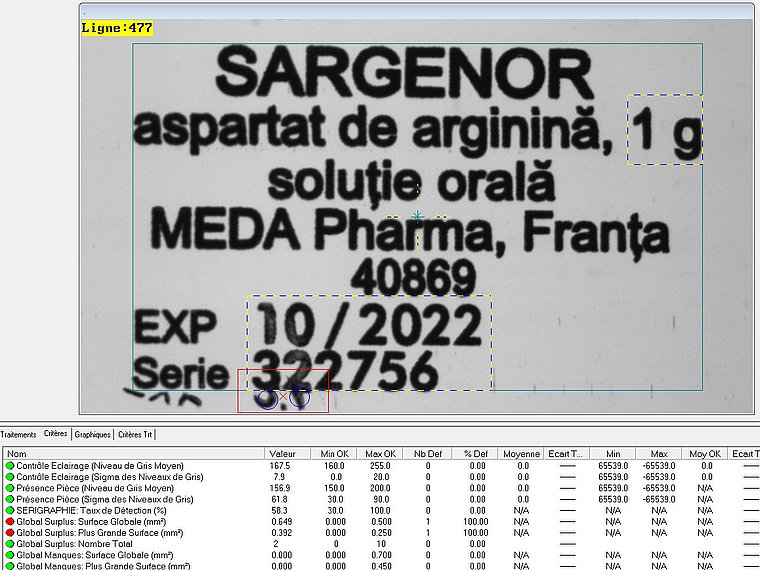
Correct detection of distortions during print inspection with HALCON’s shape-based matching
Glass, Metal, Paper, Foil & Printing | Medical Supplies & Pharmaceutical | Matching
CAPTIC Informatique et Vision Industrielle is a MVTec Certified Integration Partner located in France. They develop control systems for machine vision in industrial processes. CAPTIC integrates non-destructive control solutions on production lines with industrial cameras in a variety of different industries like automotive, pharmaceutical, perfumery, cosmetics, electronics, glassware etc.
For a company which produces glass ampoules for the medical sector, they created a customer-specific solution to inspect the printing on ampoules. The objective is to detect printing errors caused, e.g., by ink spots or empty ink cartridges.
The challenge

For print inspection, the ampoule is rotated, and the images are acquired by a line scan camera with backlight. The setup mainly consists of a backlight, a rotation motor (i.e., a wheel that drives the ampoule by friction) and an asynchronously running line scan camera. With such a rotation setup, it is practically impossible to synchronize the rotation motor with the line scan trigger.
Due to temporary lack of friction, rotation speed of the ampoules is not always the same. With the asynchronous line scan, the visible effects are local distortions, which cannot be foreseen. These distortions are often recognized as errors, but they are not. Thus, the objective is to detect printing errors with the lowest possible number of both false positive and negative reports.
The solution with MVTec HALCON
The print inspection problem can generally be solved by teaching a template of normal-appearing text in the offline phase. In the online phase, the template is aligned and compared to each input image. With the anisotropic shape-based matching, CAPTIC was able to break down the problem of local distortions into multiple local models with variable linear scaling in scan direction. Using MVTec HALCON’s toolbox, it was possible to limit the search region for each template based on the alignment of the previous one.
Benefits

Thanks to HALCON, the vision inspection system can run at 120 parts/minute with a standard mechanical handling system. The error rate was significantly reduced compared to a global alignment method. The global rejection rate can be as low as 0.05%.
Text and image kindly provided by CAPTIC Informatique et Vision Industrielle.
